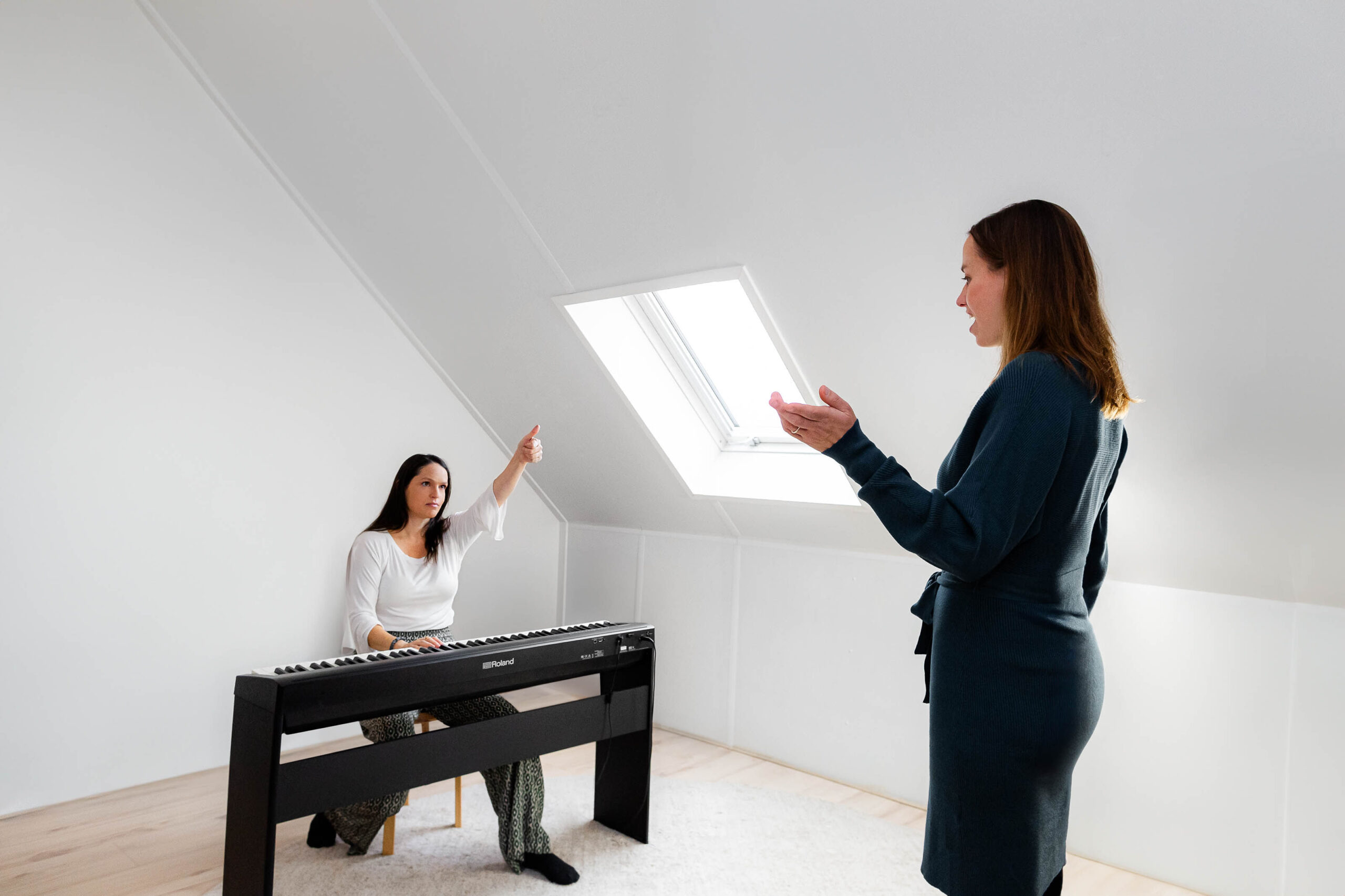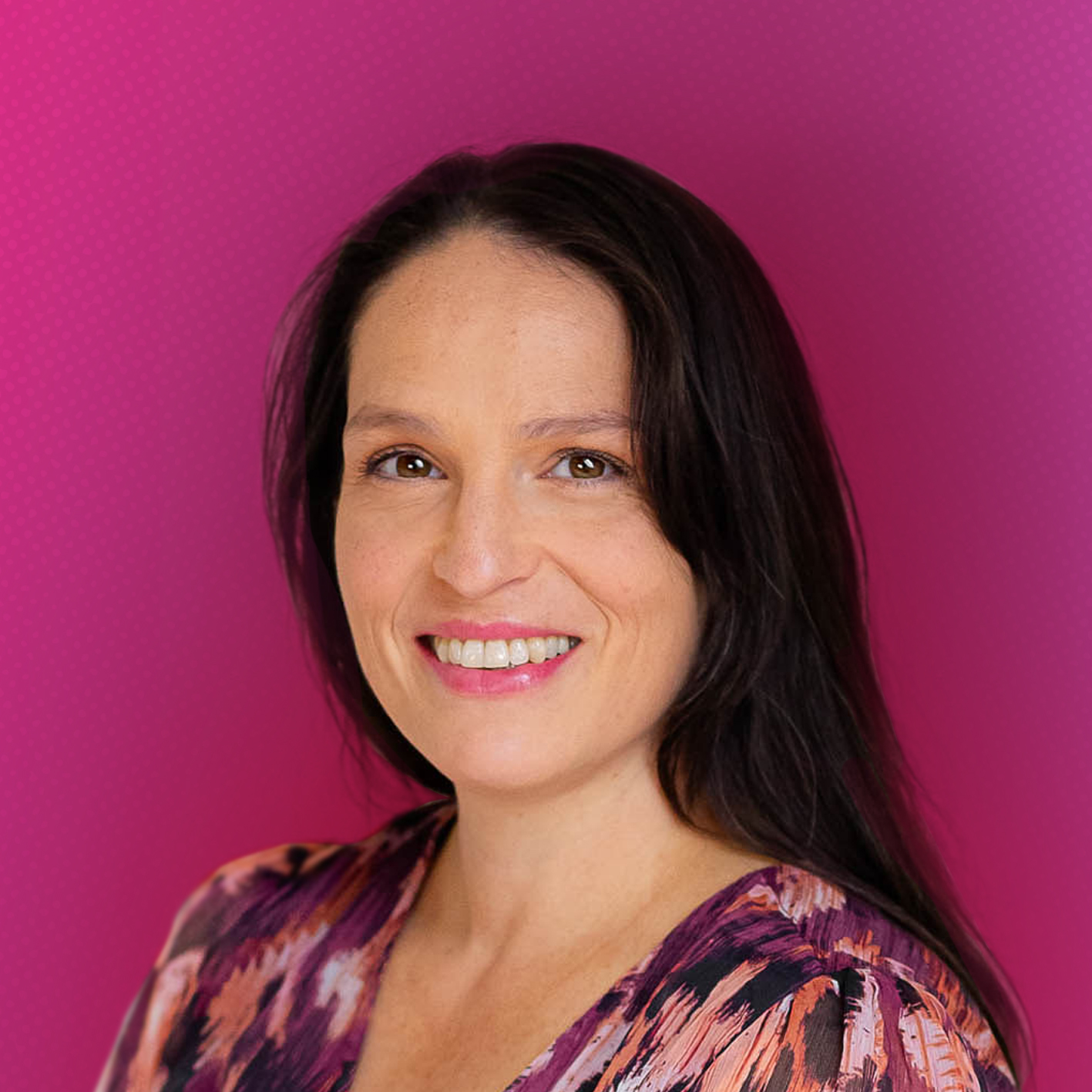
Want to learn how to sing but don’t know where to start? The truth is, anyone can become a better singer with the right mindset, technique, and practice. You don’t need to be “born with talent”. Singing is a skill you can train, step by step.
In this complete guide, I’ll walk you through the essential steps to learning how to sing. You’ll discover how to build confidence, keep your voice healthy, find the right coach or community, practice efficiently at home, and even perform with joy. Along the way, I’ll point you to resources, exercises, and tools that will make the process fun and effective.
Quick guide: How to learn to sing step by step
- Step 1 Define your dream – Picture your ideal singing future, don't be shy.
- Step 2 Remove mental blocks – Build confidence, overcome stage fright, and start loving your voice.
- Step 3 Maintain a healthy instrument – Care for your body, posture, and breath so your voice can thrive.
- Step 4 Find your support system – Join a community or program like From Whisper to Roar or the Make Singing Click Club.
- Step 5 Choose a song and learn how to sing it – Pick songs suited to your range and learn them with the breakdown method.
- Step 6 Learn vocal technique – Master fundamentals like singing in tune, extending your range, and healthy sound production.
- Step 7 Practice effectively at home – Make practice fun, efficient, and consistent.
- Step 8 Deliver and perform – Develop stage presence and expression, even as a beginner.
- Bonus: How to learn to sing at an older age - and killing it!
Step 1 Define your dream
Before you start learning technique or practicing scales, it’s important to know why you’re doing this. What is your dream as a singer?
Many people hold themselves back with thoughts like: “I don’t have the talent” or “I could never go on stage.” But you’re here because you haven’t accepted that limitation. You know singing is possible for you — and it is.
So let’s start by defining your dream. Imagine your biggest obstacles — nerves, insecurity, technical struggles — are all gone. What would your ideal singing moment look like? Maybe it’s singing in front of your family without fear. Maybe it’s holding the stage at a festival. Maybe it’s recording your first song. Write it down. The crazier and bolder, the better.
Will your dream happen exactly as you picture it? Maybe not. But the act of visualizing yourself free of obstacles is powerful. It keeps you moving forward, reminds you why you’re putting in the effort, and gives you a clear direction. Think of it as your personal North Star.
Don’t keep it to yourself. Share your dream with others — whether that’s your teacher, your fellow students, or even friends online. You’ll be surprised at how motivating it is to say it out loud, and how inspiring it can be for others who are on the same journey.
This is where we begin: with your dream performance in mind. Every step that follows — building confidence, training your voice, practicing smart — is about moving closer to that vision.
Step 2 Remove mental blocks, start loving your voice
Before you can grow as a singer, you need to face the biggest obstacle of all: your own mindset. Most singers’ struggles don’t begin with their voice — they begin with the belief that their voice isn’t good enough.
“Am I bad at singing?”
If you’ve ever asked yourself this, you’re not alone. Many students arrive at their first lesson convinced they’re “tone-deaf,” or simply “not a singer.” Maybe someone told you as a child that you couldn’t sing. Maybe you compare yourself to professionals and feel embarrassed. But here’s the truth: no one is born a “bad singer.”
Learning to sing is like learning any skill, like playing an instrument. If you sound shaky or out of tune today, that doesn’t define you. It just means your voice needs training — and with the right steps, it will improve. The moment you stop labeling yourself as “bad” and instead see yourself as in progress, your journey truly begins.
Facing stage fright
Even after you accept your voice, another mental block appears: fear. Stage fright affects almost everyone — from beginners to seasoned professionals. Your body responds as if performing were dangerous, triggering nerves, sweaty palms, or even the urge to run.
You can’t make stage fright disappear, but you can learn to work with it. The key is reprogramming your response. Instead of letting the “panic script” take over (“I’ll fail, everyone will notice”), you practice new thoughts: “It’s okay to be nervous. I can still sing.” Over time, this shift helps your brain recognize that performing is safe — even exciting.
Lorna got more confidence in her singing - fast
“I went from being a timid singer who barely dared to make a sound, to someone who now sings a cappella with confidence. That shift happened so much faster than I ever imagined, and it’s completely changed how I feel about my voice.”
Lorna, amateur singer & songwriter
Loving your voice
When you stop calling yourself “bad” and stop fearing your nerves, space opens up to actually enjoy singing. And enjoyment is the fuel that keeps your learning-to-sing journey alive. It keeps you practicing, experimenting, and growing. Without joy, even perfect technique feels hollow. With joy, every step feels worth it.
One way to build this joy is through performance exercises and mantras. Performance exercises put you in a playful, expressive state where self-criticism takes a back seat. Mantras give you a simple, supportive phrase to repeat when nerves creep in: “It’s okay, just keep going” or “I’m here to share, not to be perfect.” Together, these tools help you experience your voice in a positive light — and that’s when confidence starts to grow.
Read more about how to remove mental blocks below.
Step 3. Maintain a healthy vocal instrument
Your voice is your instrument — but unlike a guitar or piano, you can’t put it in a case when you’re done. It lives inside your body. That means taking care of your voice is really about taking care of you.
Posture and alignment
Learning how to sing starts with how you carry yourself. If your shoulders are tense, your back is slouched, or your jaw is locked, your voice will feel restricted. Aligning your posture frees up your breath and resonance, giving your sound more ease and power. Think of posture not as “standing straight” but as standing free: feet grounded, knees loose, chest open, head balanced.
Freeing up the body
Tension is the enemy of singing. That’s why bodywork — gentle stretches, breathing awareness, even practices like Alexander Technique — can be so transformative. They release unnecessary effort and teach your body to support the voice instead of blocking it. A free body allows for a free voice.
The role of yoga
Yoga deserves a special mention. Many singers find that yoga not only improves posture and breath, but also reduces stress — a major factor in vocal strain. Certain poses open the chest and lengthen the spine, while breathing exercises calm the nervous system. The result is a body that feels centered and ready to sing.

"
"As a singer who started out with zero body awareness I can tell you - yoga has changed my life and my singing. I go as far as saying that I could not have reached a professional level without yoga."
Everyday vocal health
It’s not just about practice time. The way you live affects your voice:
- Stay hydrated (your vocal folds need moisture).
- Avoid shouting or whispering for long stretches.
- Rest your voice when you’re sick or hoarse.
- Manage stress and fatigue, which directly impact your sound.
Why It Matters
Many singers focus only on vocal exercises, but without a healthy “instrument,” progress is limited. Posture, relaxation, and body awareness don’t just prevent injury — they actually make your voice stronger and more flexible. When your body feels free, singing feels natural.
Step 4. Find your vocal coach and community of supporting singers
Singing has always been a social activity. For most of human history, people sang in groups, in choirs, around fires, in rituals. Singing together wasn’t about perfection; it was about connection. That’s why trying to learn in isolation often feels so discouraging.
That’s why finding the right coach and a community of singers is so important. A coach gives you structure and direction, but a community reminds you that you’re not alone. You see others struggle with the same challenges, you celebrate their wins, and you get motivated to keep going. Progress is faster — and more joyful — when you don’t do it by yourself.
This is the philosophy behind my programs. In From Whisper to Roar, my 6-month transformation course, you don’t just learn technique. You learn in weekly online group masterclasses, where everyone supports each other. This combination of group learning, structured resources, and ongoing personal support gets you results in 6 months that usually take two years.
For singers who want a lighter touch, the Make Singing Click Club offers community at a lower level of commitment. It’s a space where singers come together to practice, learn, and encourage each other, supported by my live sessions, online archive and guidance. Many singers start here and then move into deeper training once they feel the joy of consistent progress.
Emilie about my program From Whisper to Roar

"If I commit to a group, I show up. That accountability made all the difference for me. [...] I thought I could never sing ‘Hurt’ by Christina Aguilera. But I did—and it came out beautifully. That was huge for me. [...] Every bit of progress is worth it. And you’re not doing it alone. The group cheers you on the whole way.”.'
Emilie kampman, business analyst & choir singer
From Whisper to Roar
The Make Singing Click Club
The bottom line: singing is meant to be shared. Surround yourself with people who lift you up, and a coach who knows the path. That’s how you’ll stay motivated and turn singing from a private dream into a lived reality.
(A common question is how often to take lessons. I explain the options in more detail in this guide on how often to take singing lessons)
Step 5: Choose a song and learn how to sing it
Every singer knows the moment: you think you’ve got a song down, but on stage you forget the rhythm, the pre-chorus, or when to come in. The problem isn’t talent—it’s that you didn’t really learn the song.
Before practicing, warm up your voice. Even a few quick exercises protect your voice and help you sing more freely.
About the author

I’m Linor Oren, founder of SingWell. I have an opera background and in the past I've performed on stage. I've taught hundreds of students how to find their authentic voice. What I’ve learned is that singing isn’t about being “born with it” — it’s about unlocking what’s already inside you with the right tools and guidance. My passion is helping singers at every level grow in confidence, technique, and joy, so they can sing with freedom and expression.
Know Your Learning Style
Different singers learn in different ways:
- Visual learners: read and repeat lyrics line by line.
- Auditory learners: listen and imitate, phrase by phrase.
- Tactile learners: write lyrics down by hand and sing them.
Use the method that fits you best—or combine them.
The breakdown method
Learn your song in small steps:
- Master the first phrase.
- Add the next, then connect them.
- Keep building until you’ve got the whole song.
Zoom in on tricky transitions (like verse into chorus) instead of always starting from the beginning.
Pick the right song
Choose a song that fits your range and current level. If you’re a beginner, start with something simple—check out my Easy Songs for Beginners article for ideas.
Always finish practice with a fun sing-through. This reinforces memory and keeps your motivation high. Learning songs this way makes memorization easier and frees you to actually enjoy performing.
Step 6: Learn vocal technique
For full technique detail, see the Singing Techniques & Vocal Exercises guide. Great singing doesn’t happen by accident. It’s built on technique and smart practice. This step is about freeing your voice, and building strength.
Know your voice type and free your instrument
Voice categories like soprano or tenor can be useful, but labeling too early can hold you back. Focus first on freeing and training your instrument; your true type will reveal itself later. Strain and raspiness are the biggest obstacles for singers. The key is less effort, not more: efficient breath and healthy vocal cord closure create power and clarity without pain.
“Open your throat” really means releasing tension and allowing resonance. With posture and body awareness, you can unlock space so your voice feels freer and fuller.
Developing pitch awareness and learning how to sing in tune also are in play here.
Build strength, range, and resonance
Once healthy, work on expanding:
- High notes with relaxation and smart support
- Resonance to make your sound efficient
- Registers (chest, head, mix) to move smoothly without breaks
Keep a checklist
Pick 2–3 technical goals per practice (like breath or resonance) instead of vague self-criticism. This keeps progress clear and steady.
Add artistic tools
When technique feels solid, explore vibrato, mic technique, or even singing while playing an instrument. These elevate your singing from “correct” to expressive.
Step 7: Learn to practice singing at home
Practicing at home can feel confusing. Many singers don’t know where to start or worry they’re doing it wrong. Without a plan, practice often becomes chaotic or discouraging.
The solution is structure. A clear system makes practice simple, productive, and even enjoyable.
How often to practice
Consistency matters more than time. Aim for 4–6 sessions per week, with at least one rest day.
- Beginners: 15 minutes is plenty
- Intermediates: 30–40 minutes
- Advanced: up to an hour, but only if it feels easy and free
The 4-part practice formula
- Loosen body and posture with stretches or yoga
- Warm up with 5–10 minutes of vocal exercises
- Drill one technique on a short phrase, rate yourself, and repeat
- Sing through a song for joy and expression
Coaching yourself
Skip vague judgments like “that was bad.” Instead, focus on one technique (jaw, breath, resonance), track your progress, and keep it specific.
Feedback between lessons
Don’t go it alone. Share short clips with your teacher to stay on track, avoid bad habits, and keep motivated.
The bottom line
Practice should feel like progress, not punishment. With a simple plan and some support, you’ll build consistency, enjoy the process, and unlock your voice step by step.
Step 8: Deliver and perform
Confidence in singing isn’t just about technique: it’s about how you feel when you share your voice. Many singers struggle more with self-doubt, stage fright, or fear of judgment than with hitting the right notes. The good news? Confidence can be trained just like your voice.
Most people who think they “can’t sing” are simply untrained. Hurtful comments from the past don’t define you. With practice and the right mindset, you can learn to enjoy your own sound and trust that your voice has value.
Confidence on stage
Audiences don’t expect perfection — they want expression. Mistakes happen to every singer, but what matters is staying present and expressive. Shift your mindset from impress to express. Simple mantras like “just keep going” help when nerves creep in.
Stage fright and preparation
Stage fright is your fight-or-flight response, not proof you’re unfit to perform. With tools like breathing, mantras, and performance exercises, nerves can become energy instead of fear. In the week before a show, stop worrying about technique and focus on expression. Imagine scenes, emotions, or even a “pro singer” version of yourself to free your performance.
The bottom line
Confidence doesn’t mean being fearless. It means showing up, letting the music move you, and sharing that with your audience. With practice, you’ll learn to perform with freedom and joy.
No longer a little mouse...
Maybe you feel it's time to stop shushing your own voice and take your desire to sing serious. My weekly 'Belting Mouse' mail shows you how. It gets you on track with stories and insights from my life as a singer and that of my students.

For 'little mice' who are tired of squeaking and want to start belting...
How to learn to sing at an older age - and killing it!
One of the most common worries I hear is: “Am I too old to start singing lessons?” or “Is it too late to improve my voice?” The short answer: no. Singing is a skill built on habits, and new habits can be learned at any age.
It’s true that voices change as we get older — hormones, health, and even decades of ingrained habits all play a role. But that doesn’t mean your best singing is behind you. In fact, many singers only find their full, authentic voice later in life, once they have the confidence and perspective to enjoy it.
From Brandy still sounding powerful in her 40s, to my students like Champness and Jim who only began in their 50s and 60s, the proof is everywhere: age is not a barrier. What matters most is curiosity, commitment, and the willingness to embrace your voice as it is now.
👉 In this bonus section, we’ll explore what really happens to the ageing voice, how you can train it, and why thinking you’re “too old” is the biggest waste of time.
About the author

I’m Linor Oren, founder of SingWell. I have an opera background and in the past I've performed on stage. I've taught hundreds of students how to find their authentic voice. What I’ve learned is that singing isn’t about being “born with it” — it’s about unlocking what’s already inside you with the right tools and guidance. My passion is helping singers at every level grow in confidence, technique, and joy, so they can sing with freedom and expression.
